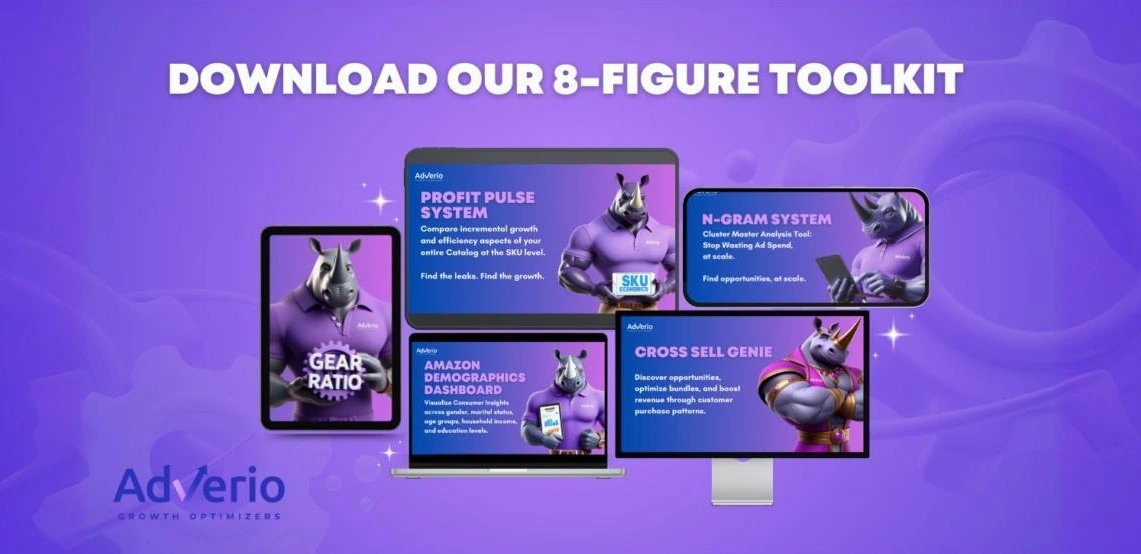Table of Contents
Amazon just launched a new discovery feature — and if you sell on their marketplace, it’s one you can’t afford to ignore.
In March 2025, they introduced Interests, a shopper-first search shift that goes beyond keywords. Instead of typing in brand names or product specs, customers can now use phrases like “tools for hobbyist engineers” or “cottagecore decor under $100.” Amazon’s AI then surfaces products that align with the intent behind those words.
For brands managing large catalogs, this isn’t a small tweak it’s a new paradigm for how products get found. And the brands that adapt early? They’ll own the algorithm.
Here’s what’s changing and how to turn it into a growth advantage.
1.Discovery Is Moving Beyond Keywords
Traditionally, Amazon has been built around search. Shoppers enter keywords, and brands compete to win those terms with ads, SEO, and content. Interests shifts that model by encouraging natural-language queries full of nuance, context, and shopper intent.
That means shoppers no longer need to know exactly what they want. They just need a general idea and Amazon will do the rest.
For brands, this opens up new visibility for products that previously would have been buried. But that only happens if your product pages are built to support it.
Takeaway:
Review your product listings. Are your bullets and titles written for SEO only, or do they reflect how real people describe what they’re shopping for? Incorporating language that mirrors lifestyle, use cases, or emotional drivers will matter more than ever.
2. Shoppers Will Expect More Relevant Results
As Amazon becomes better at surfacing personalized recommendations, customer expectations will rise. If your listings are vague, inconsistent, or too similar across SKUs, you risk falling behind even if you’ve historically performed well on search.
Think of each product detail page (PDP) as a micro storefront. Does it clearly communicate who the product is for, how it fits into their life, and why it’s different?
Takeaway:
Audit your PDPs like you would landing pages.
Ask:
- Are you speaking to a specific audience or moment?
- Does the imagery show use cases, not just the product?
- Is there clarity, personality, and purpose behind each asset?
3. The Long Tail Just Got More Valuable
For most brands, 10–20% of SKUs drive 80% of revenue. Interests could start shifting that equation. By matching shopper prompts to more specific products, Amazon is essentially opening up new doors into your catalog especially the slower-moving SKUs that rarely get attention.
This is a big opportunity for brands that have already invested in catalog breadth. But if most of your energy is focused on top performers, this shift may pass you by.
Takeaway:
Don’t just optimize the bestsellers. Use performance data to identify under-the-radar products with potential. Look for niche relevance, strong reviews, or untapped search intent, and give them the creative treatment they deserve.
4. Amazon Is Becoming a Guide, Not Just a Shelf
With Interests, AI-generated shopping guides, and tools like Rufus, Amazon is positioning itself less as a search engine and more as a shopping assistant. It’s about helping people find the right product, not just the product that ranks best.
That has implications for how the algorithm evaluates products. Content quality, clarity of fit, and overall catalog cohesion will likely play a bigger role in how your products show up.
Takeaway:
Think holistically. If you’re still focused only on ad spend or ranking tactics, it’s time to broaden the view. Align your catalog, creative, and operations with the idea that Amazon is trying to create a guided shopping experience and will reward brands that make that easier.
Final Thought: Discovery Now Rewards Depth
The rollout of Interests reinforces a trend that’s been building for a while: Amazon wants to understand shoppers, not just search terms. And that shift benefits brands with depth in product selection, in positioning, and in storytelling.
If your catalog is bloated, under-optimized, or inconsistent, now is the time to get ahead of it.
Considering a Catalog-Wide Strategy?
If you’ve been focused on top performers but have a broader product lineup that isn’t pulling its weight, there may be real opportunity hiding in your catalog. A structured audit can help you find it.
We work with brands that have 100s or 1000s of SKUs helping them build visibility and profit across the board, not just in isolated pockets.
If you want to explore what that could look like, start with a complimentary Opportunity Analysis.
It’s a data-first look at where your catalog is working, where it’s not, and what to prioritize next.





























